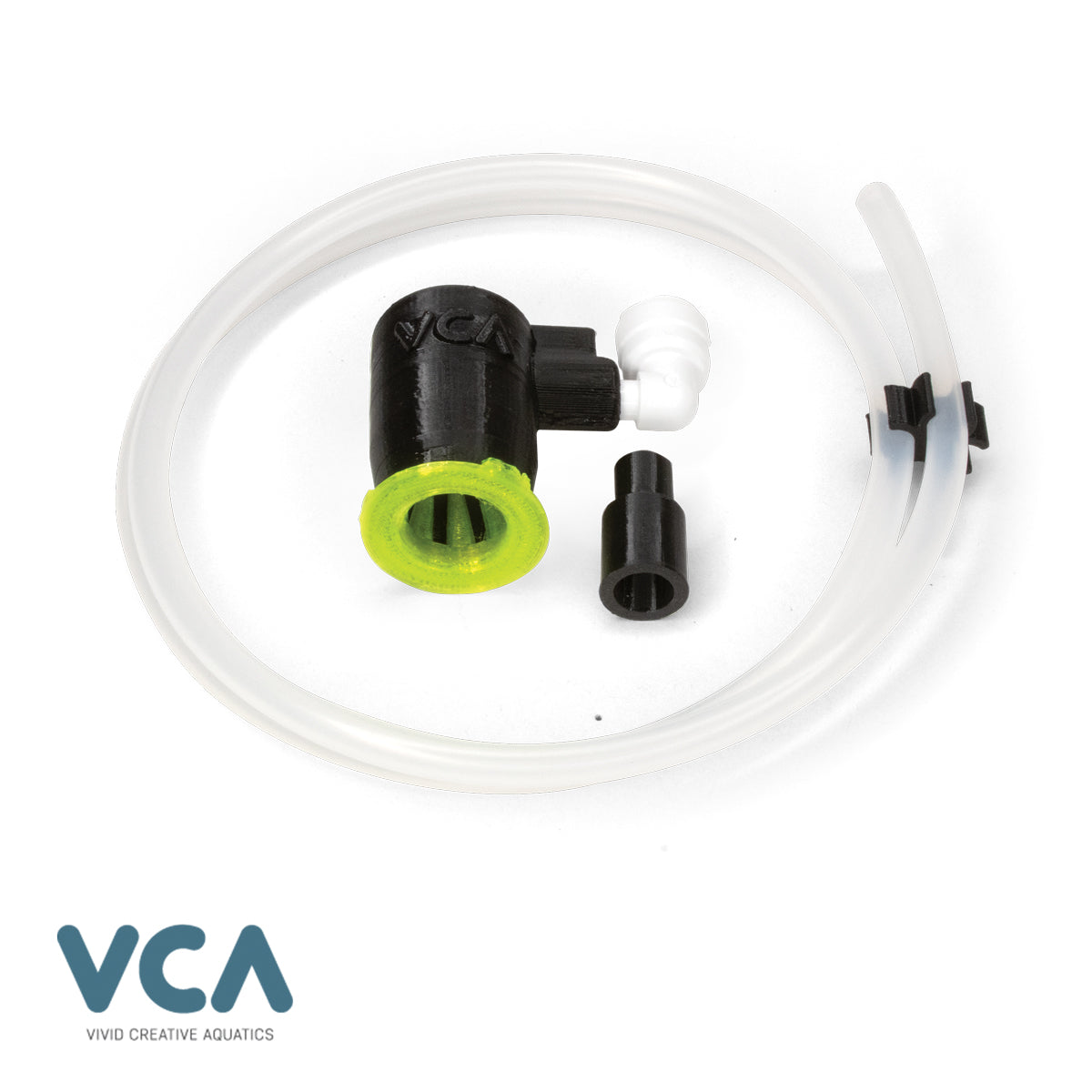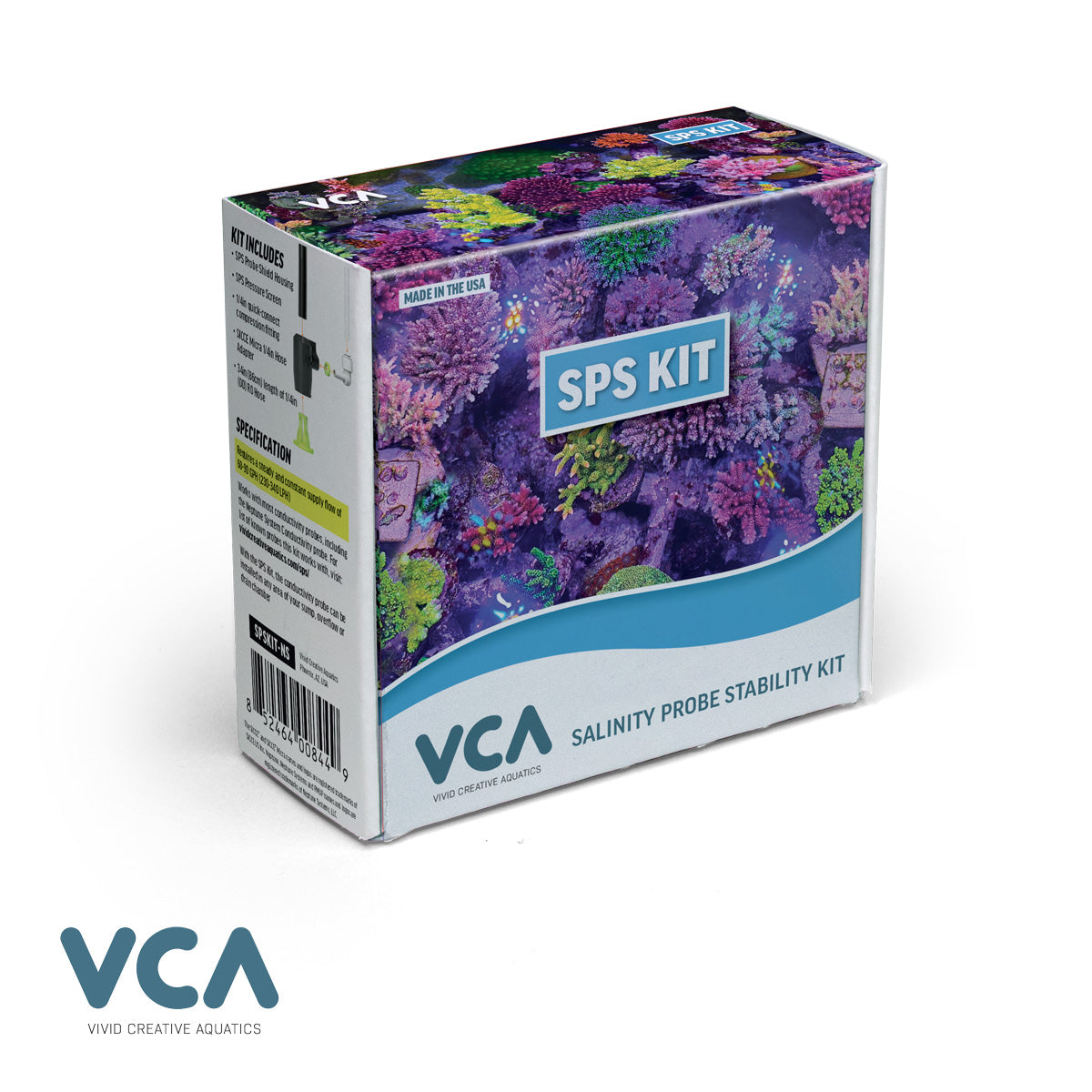Description
Vivid Creative Aquatics SPS Kit – The Salinity Probe Stability Kit
Monitoring salinity in an aquarium can be a challenge-- small bubbles and debris can interfere with your conductivity probe, leading to inconsistent and unreliable results.
Vivid Creative Aquatics has tackled this problem head on with their Salinity Probe Stability Kit. The "SPS" Kit is carefully designed to create just the right amount of water movement and constant pressure around the probe to provide a solid and reliable reading. It will also shield the probe from bubbles and other debris; However, if a bubble does get in, the SPS kit’s constant flow over the probe will act to flush it out and help the reading recover quickly.
The SPS Kit is very easy to use. Simply slip the SPS kit over the end of your probe, connect the 1/4" supply line to a small pump, such as a Neptune PMUP or SICCE 90 GPH Micra, or even an open port on your manifold. For the best results, supply the SPS kit between 60 to 100 GPH of consistent and constant flow.
Installation
- While supporting the internal spacer screen, slip the end of the probe through the top of the SPS kit. Gently push the probe in until it stops.
- Connect the 1/4" supply line to the push fitting
- Connect the end of the supply line to a Neptune System PMUP, SICCE Micra, or another suitable pump. You may also connect the supply line directly to an open manifold port. Please note that with high-flow supplies, you may need to regulate the flow using a ball valve. You are aiming for 60 to 100 GPH.
- Place the probe and SPS kit into the water and turn on the flow
- With the supply flow on, cover the end opening at the bottom of the SPS kit with your finger for a few seconds to expel any air or bubbles that may be trapped. You may also gently shake the assembly up and down. Both of these actions will greatly shorten the initial settle in period.
- The settle in period will generally last anywhere from a few minutes to as much as an hour. Once settled in, your reading will level out and you should see a trend line that deviates no more than a 0.2 to 0.1 up or down.


